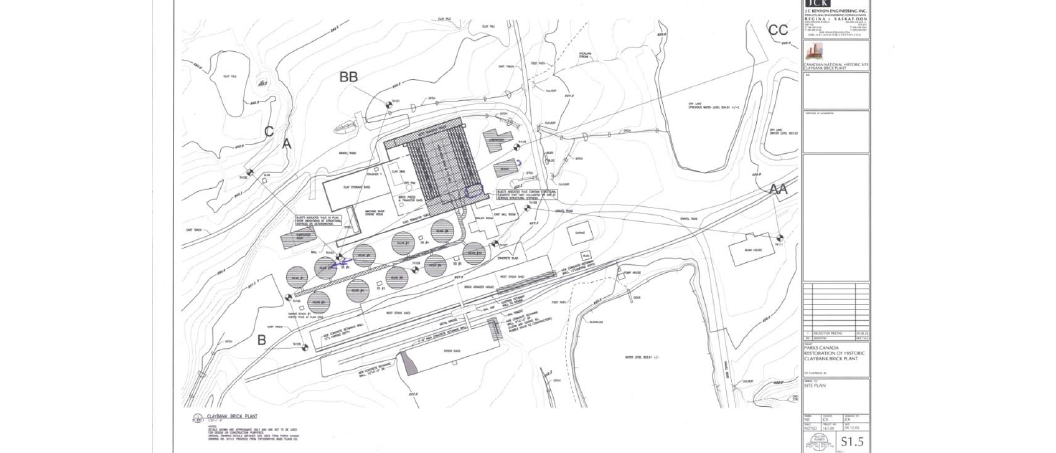1 P. Glanville, Ph.D., Heritage Architect, Ministry of Parks, Culture, and Sport, patricia.glanville@gov.sk.ca
ABSTRACT
The Claybank Brick Plant became a National Historic Site in 1997. It is composed of a series of both wood frame and masonry structures that functioned to produce brick, using on-site clay to produce both face and refractory brick. Built between 1912 and 1930 and closed in 1989, the plant was composed of a brick factory, ten round downdraft kilns, power plant, stock shed and housing. The products were used in significant local government and institutional structures as well as sold for military use. The plant survived economic fluctuations and demolition. The surviving kilns provide examples of simple, elegant structures tolerating progressive states of deterioration.
However, there are inherent complications as a result of site conditions related to both site geology and topography, both of which have affected the landscape in and around the plant. Situated between a moraine and an alluvial fan, the plant has been subjected to a significant amount of water infiltration over time. In addition, the subgrade deposits from the last glaciation are composed of layers of sand and clay till which attract and retain the surface run-off.
The paper will present a brief history of the Claybank kilns, an overview of the design and function of the structures, site conditions, and will discuss observations and factors contributing to the deterioration of the structures and recommended remedial work. Concluding remarks will address the remedial work that will be conducted in early 2013, which will be included in the final presentation.
KEYWORDS: masonry conservation, kilns, domes, geology, topography
525.pdf



